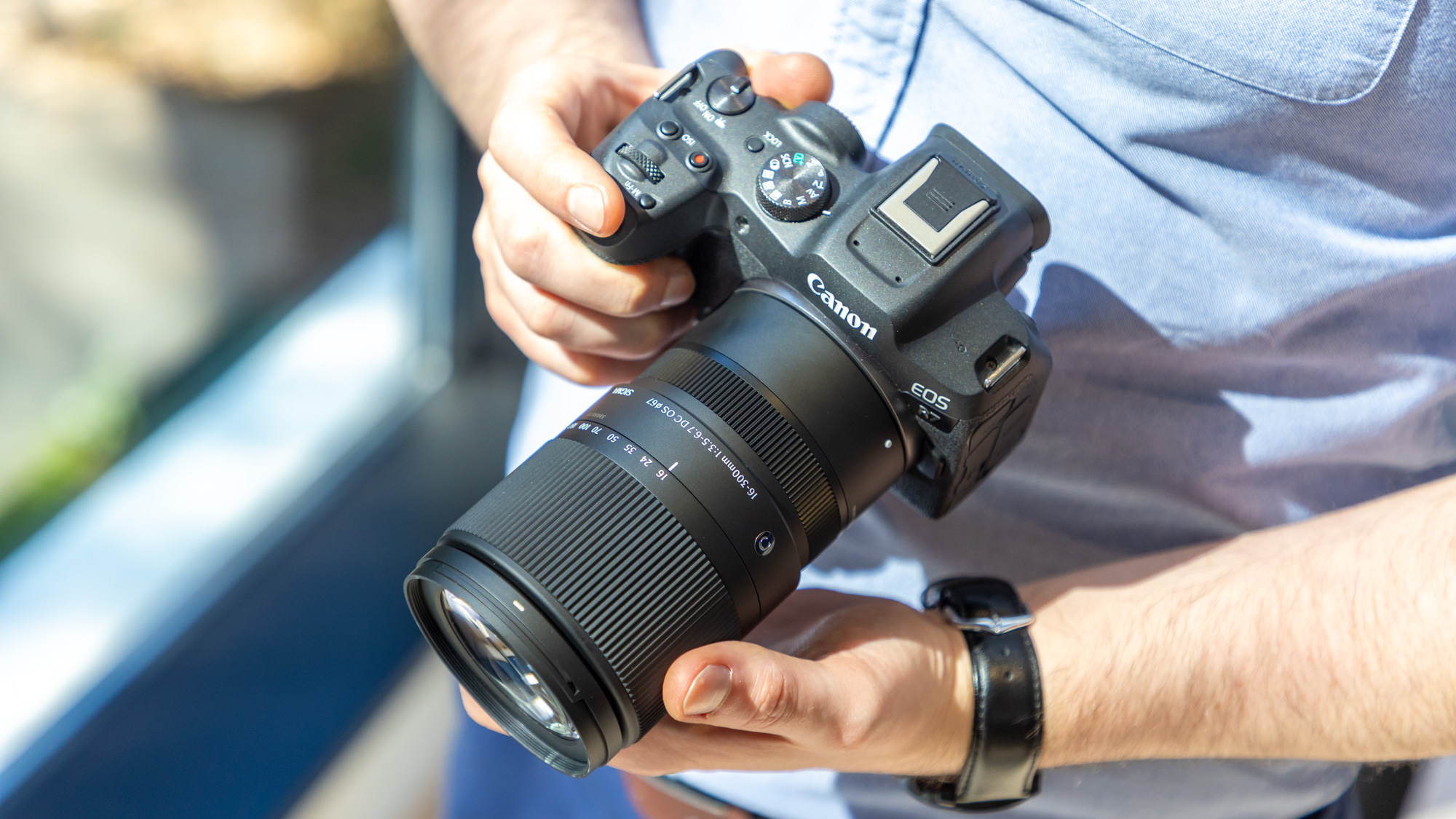
I feel there’s been a reversal of fortunes. Back when DSLRs were the order of the day, Tamron often seemed to lead the way in superzoom territory, launching lenses with ever greater ‘world-first’ and ‘world-best’ zoom ranges. They included the Tamron 16-300mm f/3.5-6.3 Di II VC PZD Macro and the Tamron 18-400mm f/3.5-6.3 Di II VC HLD, although I always felt that the latter was a bit hefty to qualify as a ‘travel lens’. At around the same time, the mightiest Sigma superzoom was the Sigma 18-300mm f/3.5-6.3 DC Macro OS HSM | C, which lacked the wide-angle extremity of the Tamron 16-300mm. Even so, the Sigma was a neat and fairly compact lens, although I didn’t like the way its focus ring rotated during autofocus, which impaired its handling. Fast forward to mirrorless, and Tamron released the Tamron 18-300mm f/3.5-6.3 Di III-A VC VXD for APS-C format Fujifilm X and Sony E cameras back in 2021.
Now it’s Sigma’s turn to rule the superzoom realm, this new 16-300mm having the biggest zoom range of any APS-C format lens for mirrorless cameras to date. It’s also available in a relatively wide variety of mount options, including Canon RF, Fujifilm X, L-mount, Sony E (but sadly no Nikon Z DX version on the horizon). The Sigma is definitely a contender for being one of the best travel lenses on the market today, and an ideal match for some of the best mirrorless cameras.
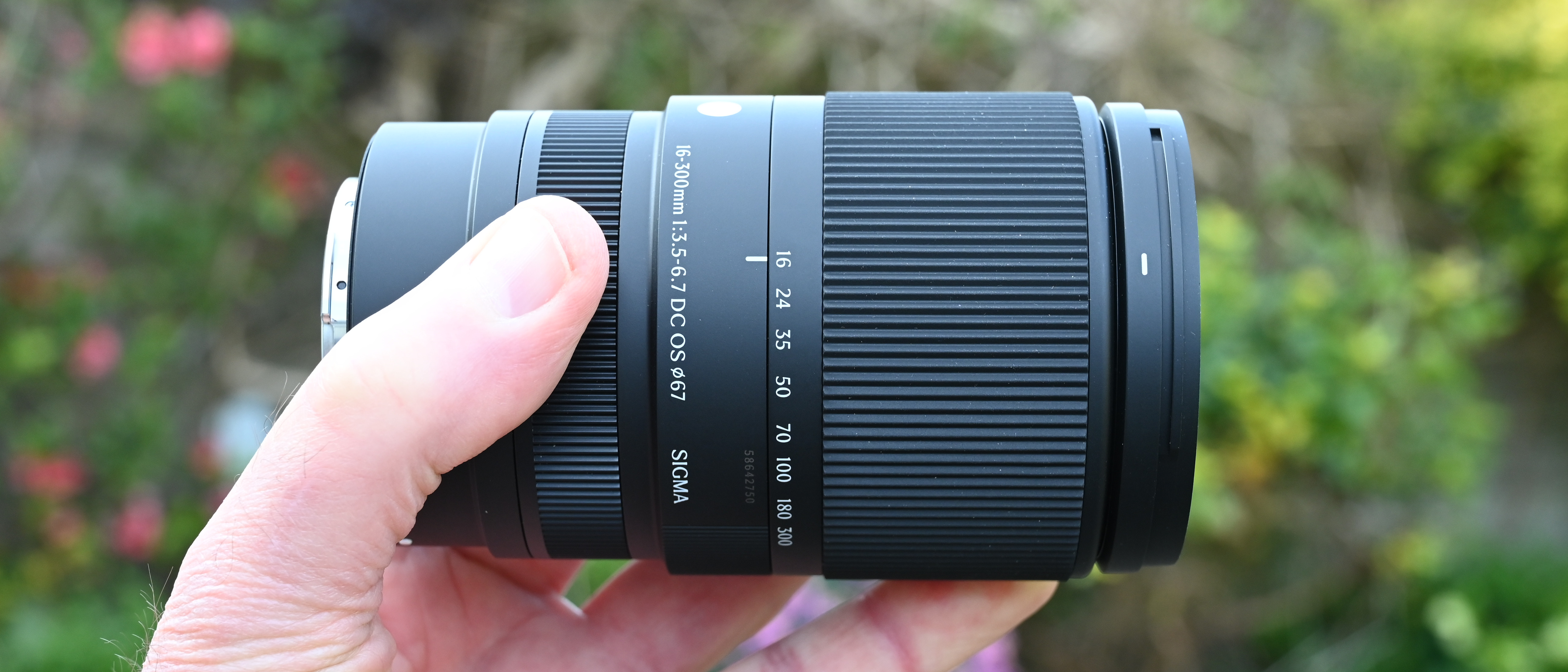
Sigma 16-300mm f/3.5-6.7 DC OS | C: Specifications
Sigma 16-300mm f/3.5-6.7 DC OS | C: Price
The closest thing to the new Sigma 16-300mm lens on the market is the Tamron 18-300mm f/3.5-6.3 Di III-A VC VXD for APS-C format Fujifilm X and Sony E cameras. The Tamron launched back in 2021 and currently has an RRP of $699 / £589 / AU$1,100. The Sigma comes to the market in 2025 with a very similar price tag of $699 / £599 / AU$1,200, the L-mount and Sony E-mount versions becoming available in April, followed by the Canon RF and Fujifilm X versions in May.
Sigma 16-300mm f/3.5-6.7 DC OS | C: Design & Handling
The big attraction of any superzoom lens is that you can sweep from generous wide-angle coverage to powerful telephoto reach and everything in between, with just the flick of the wrist. They’re therefore most ideal as travel lenses and for walkabout photography, when you’re limited for space or don’t want to weigh yourself down with extra lenses. Compared with the Tamron 18-300mm lens and taking the APS-C crop factor into account, this Sigma lens gives an effective zoom range in full-frame equivalence of 24-450mm, the Tamron giving 27-450mm. Ultimately, both lenses deliver the same maximum telephoto reach but the Sigma gives noticeably more wide-angle coverage. An exception is that Canon EOS R system APS-C cameras have a 1.6x rather than 1.5x crop factor, so the Sigma and Tamron lenses equate to zoom ranges of 25.6-480mm and 28.8-480mm respectively.
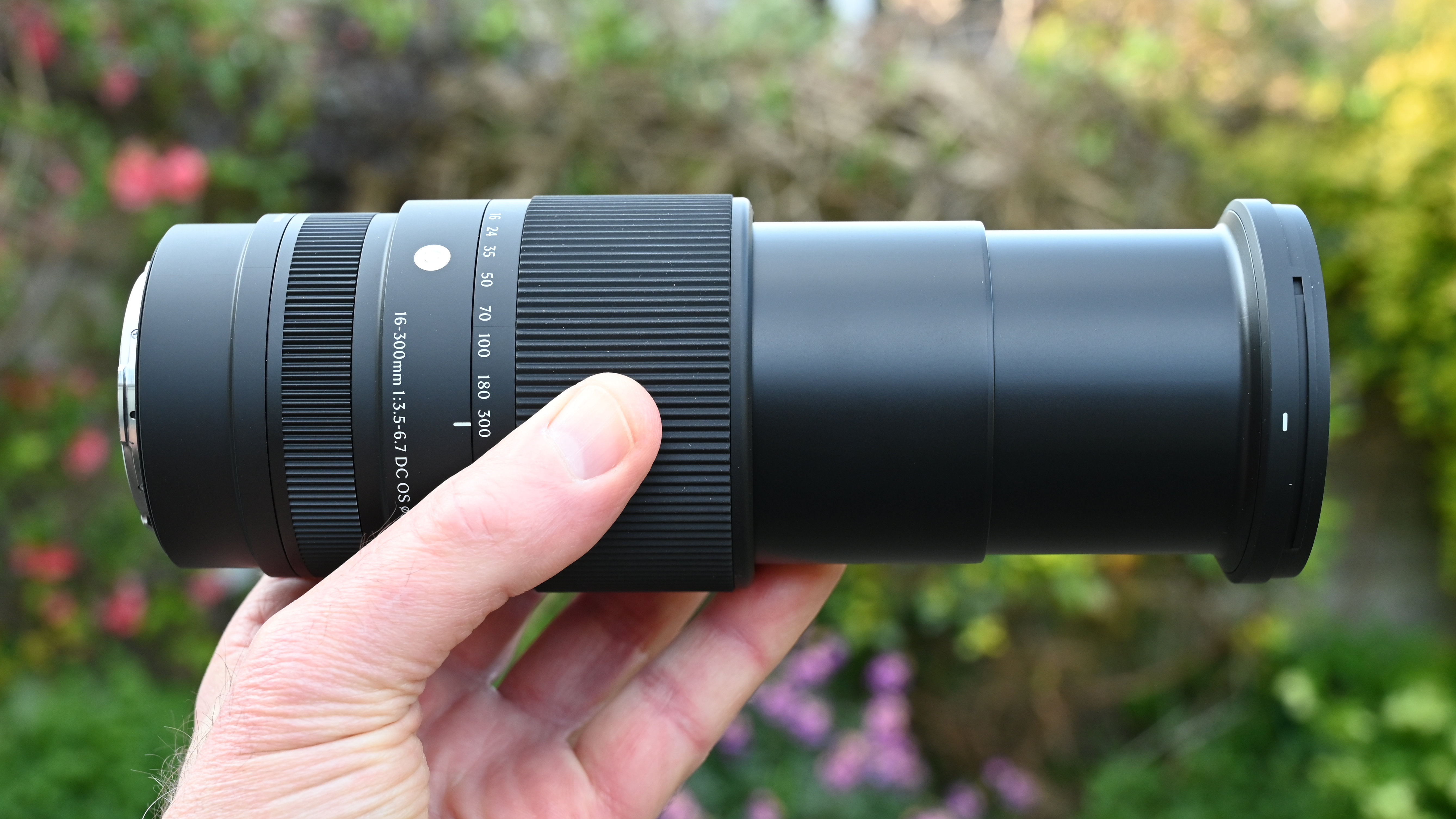
One thing at the top of my wish list for a travel lens is that it’s sufficiently small and lightweight to be stowed away in small spaces, and to be carried with ease. The Sigma obliges with dimensions of 74x121mm (2.9x4.8") and a weight of 615g (1.4lb), making it easily manageable for the journey. Typical of superzoom lenses, however, it telescopes out and stretches to much longer physical lengths when extending through the zoom range. That’s courtesy of two inner barrels that shift back and forth but, unlike with some examples of the breed, the zoom ring glides with smooth efficiency. No less than eight focal lengths are marked on the barrel, for handy reference.
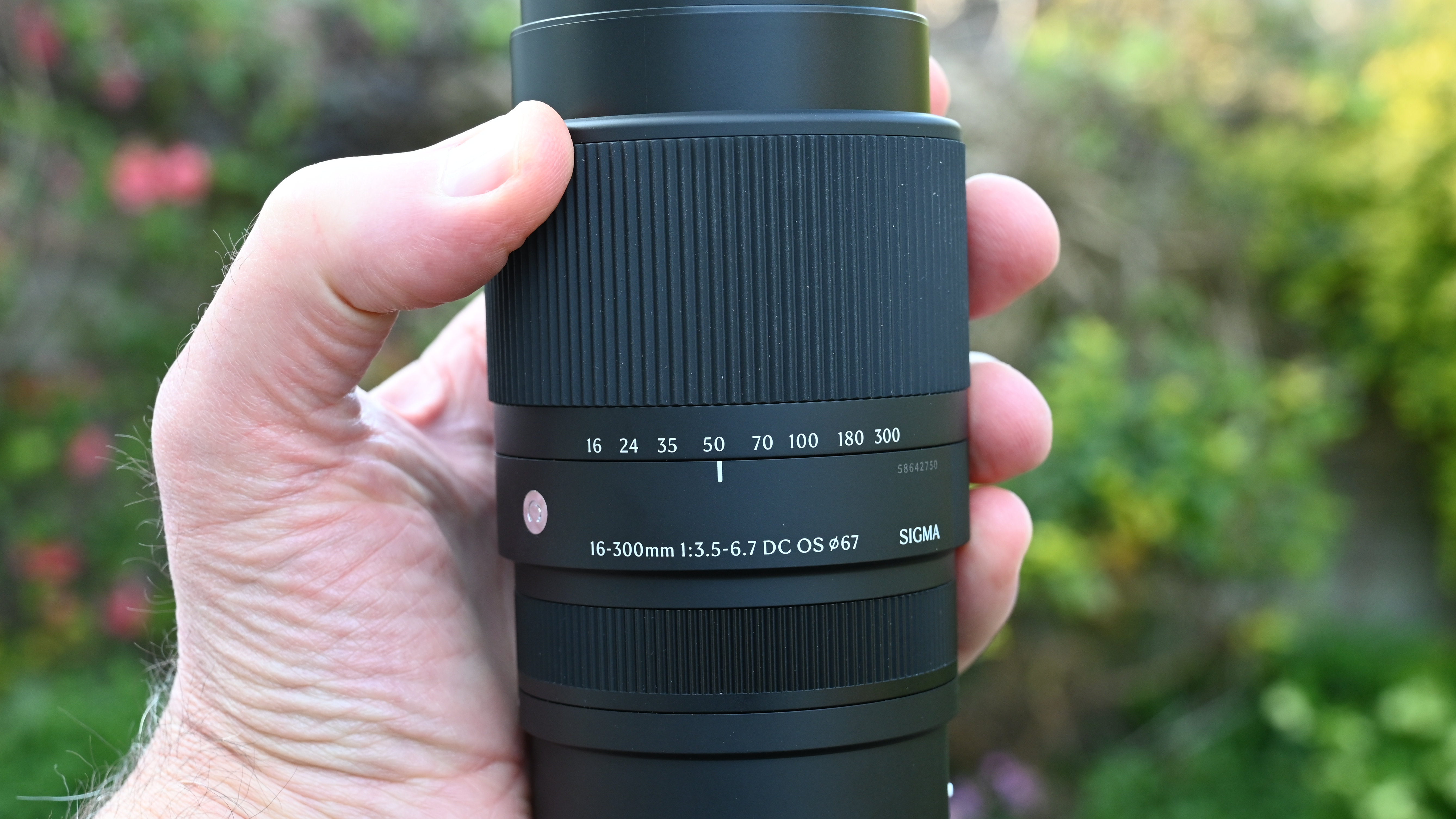
Next on the hit list are autofocus and optical stabilization. Autofocus is handled by an HLA (High-response Linear Actuator) motor. It’s a linear stepping motor by an alternative name, which aims for fast, accurate and near-silent performance. Unlike with the older Sigma 18-300mm f/3.5-6.3 DC Macro OS HSM | C for DSLRs, the focus ring of the new lens is electronically coupled and doesn’t rotate during autofocus, which represents a major handling improvement. Optical stabilization is rated at 6-stop efficiency at the short end of the zoom range, dropping to a still impressive 4.5 stops at the telephoto end. In a nutshell, both autofocus and optical stabilization are of a high order, the latter being particularly useful given that so many APS-C format mirrorless cameras lack IBIS (In-Body Image Stabilization). One slight niggle as far as I’m concerned is that there are no A/M focus mode nor stabilization on/off switches.
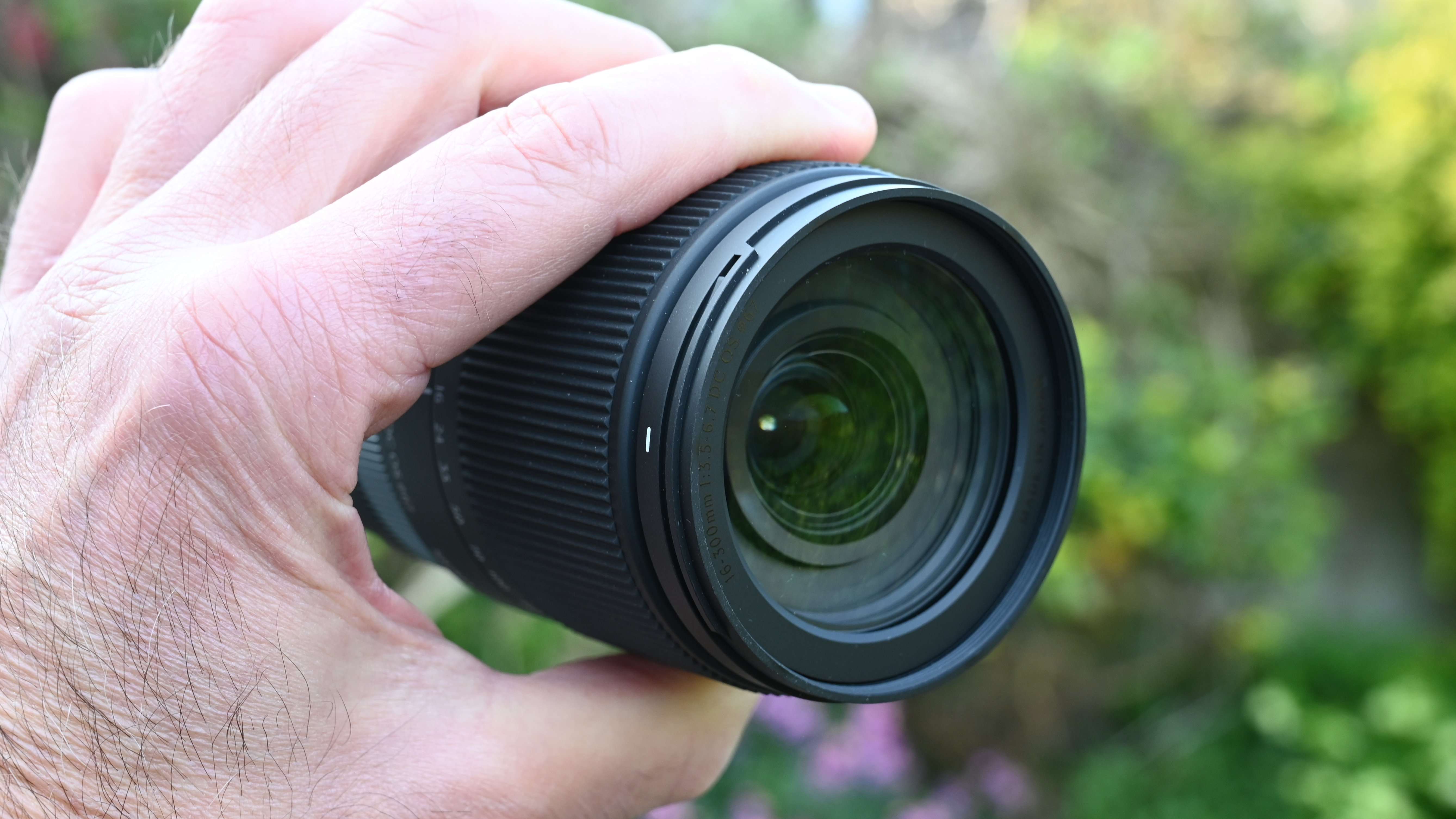
The focus range itself naturally stretches to infinity at all focal lengths, while the closest focus distances are a more moveable feast. It varies from 17cm (6.7”) at the short end of the zoom range to 105cm (41.4”) at the long end. That can be a bit of a pain if you’re zooming in and out at close object distances but on the plus side, the lens delivers an impressive maximum magnification ratio of 0.5x at its 70mm focal length.
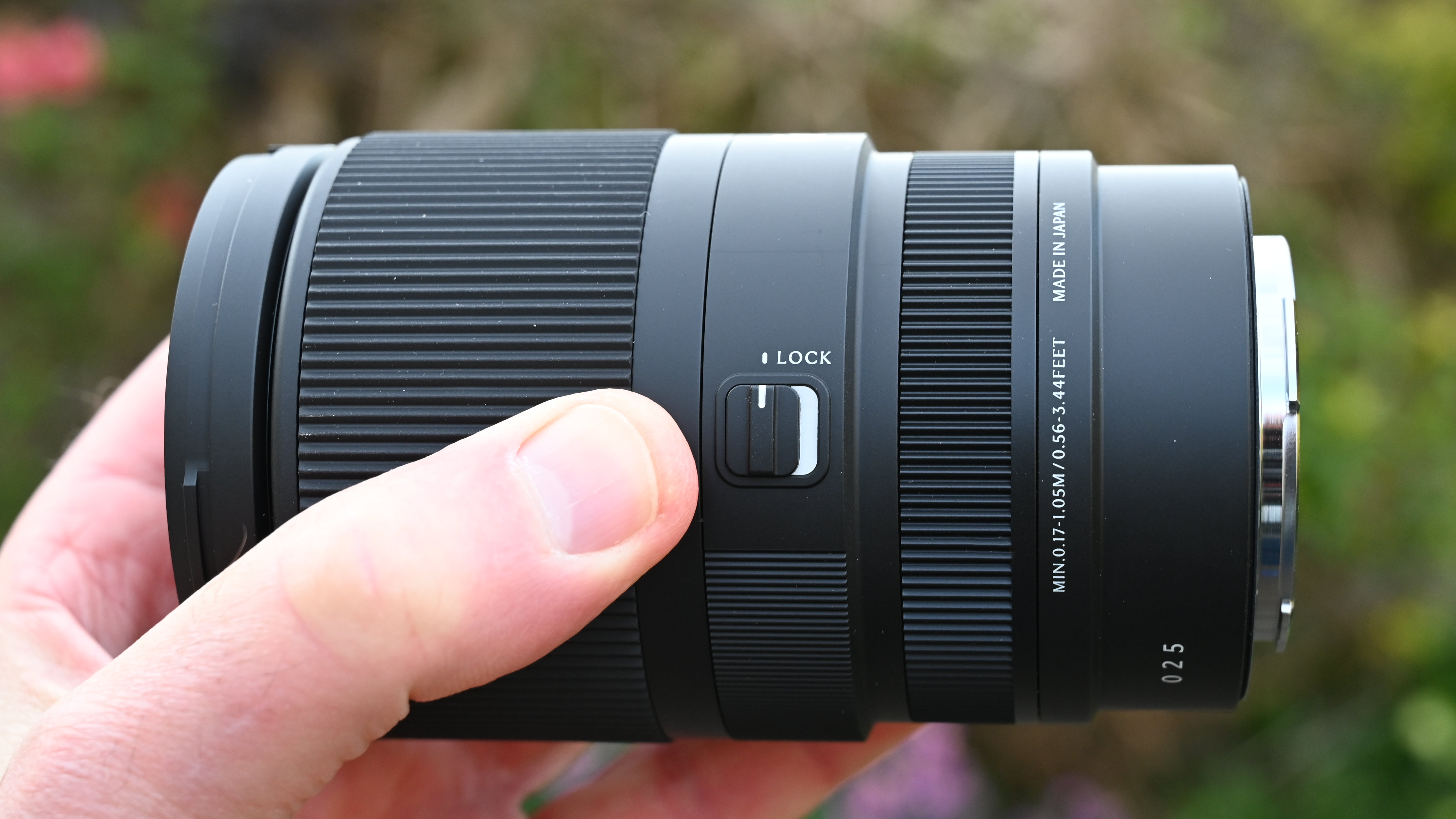
Build quality feels convincing and, unlike some APS-C format lenses from various camera manufacturers, the Sigma features a solid metal rather than metal mounting plate. Better still, the mounting plate features a rubber weather-seal ring and the overall construction is designed to be splash/dust resistant, adding to its ‘travel lens’ credentials.
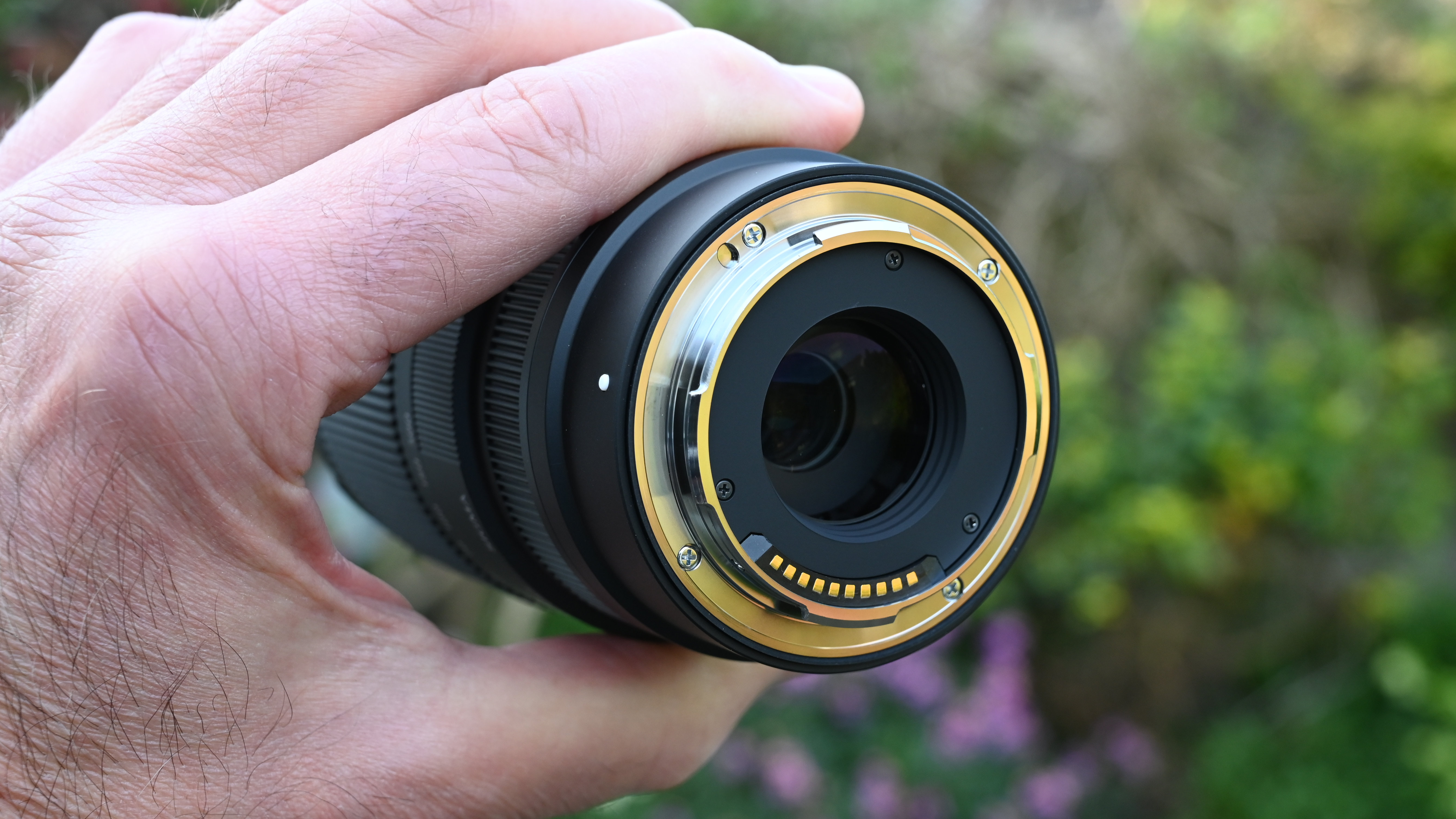
Sigma 16-300mm f/3.5-6.7 DC OS | C: Performance
It’s often said that superzoom lenses compromise image quality in favor of a bigger zoom range. The Sigma 16-300mm aims to limit the damage, despite currently having the biggest zoom range of any lens for mirrorless APS-C format cameras. High-end glass in the 20-element strong optical path includes four SLD (Special Low Dispersion) elements and one top-class FLD (‘Fluorite’ Low Dispersion) element, along with four aspherical elements. In my real-world testing, I was mostly impressed with levels of sharpness and clarity for a superzoom lens, although I found it tended to drop off a bit at the most wide-angle setting.
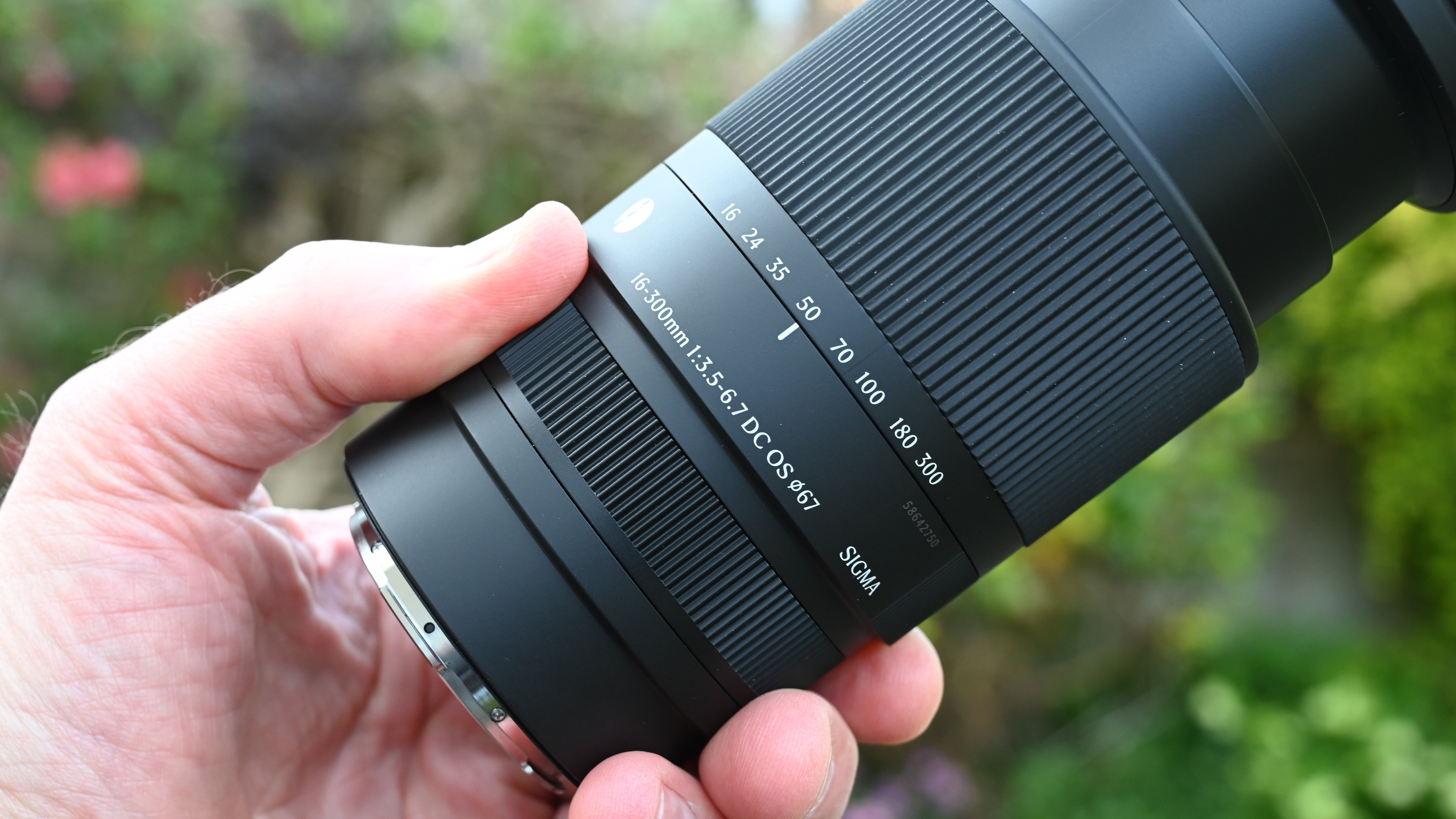
Autofocus lives up to its billing in being very quick and snappy for stills, and I found it to be consistently accurate as well as virtually silent in operation. Sigma’s latest OS2 optical stabilization system also does the lens proud. Testing it on a camera that lacked IBIS, I found it to be a real shot-saver for handheld photography, and a ‘must-have’ feature towards the long end of the zoom range, which equates to 450mm in full-frame terms (480mm for Canon).
The following gallery of images was taken of the same scene from the same shooting position, centering on Bath Abbey from the distant Alexandra Park above, and demonstrates the relative field of view at focal lengths of 16mm, 35mm, 70mm, 180mm and 300mm.






Sigma 16-300mm f/3.5-6.7 DC OS | C: Sample Images
The following gallery of sample images was shot in and around the UK city of Bath, some examples showing the same scene taken at minimum and maximum focal lengths, to demonstrate the overall zoom range.















Sigma 16-300mm f/3.5-6.7 DC OS | C: Lab Results
We run a range of lab tests under controlled conditions, using the Imatest Master testing suite. Photos of test charts are taken across the range of apertures and zooms (where available), then analyzed for sharpness, distortion and chromatic aberrations.
We use Imatest SFR (spatial frequency response) charts and analysis software to plot lens resolution at the center of the image frame, corners and mid-point distances, across the range of aperture settings and, with zoom lenses, at four different focal lengths. The tests also measure distortion and color fringing (chromatic aberration).
Sharpness:
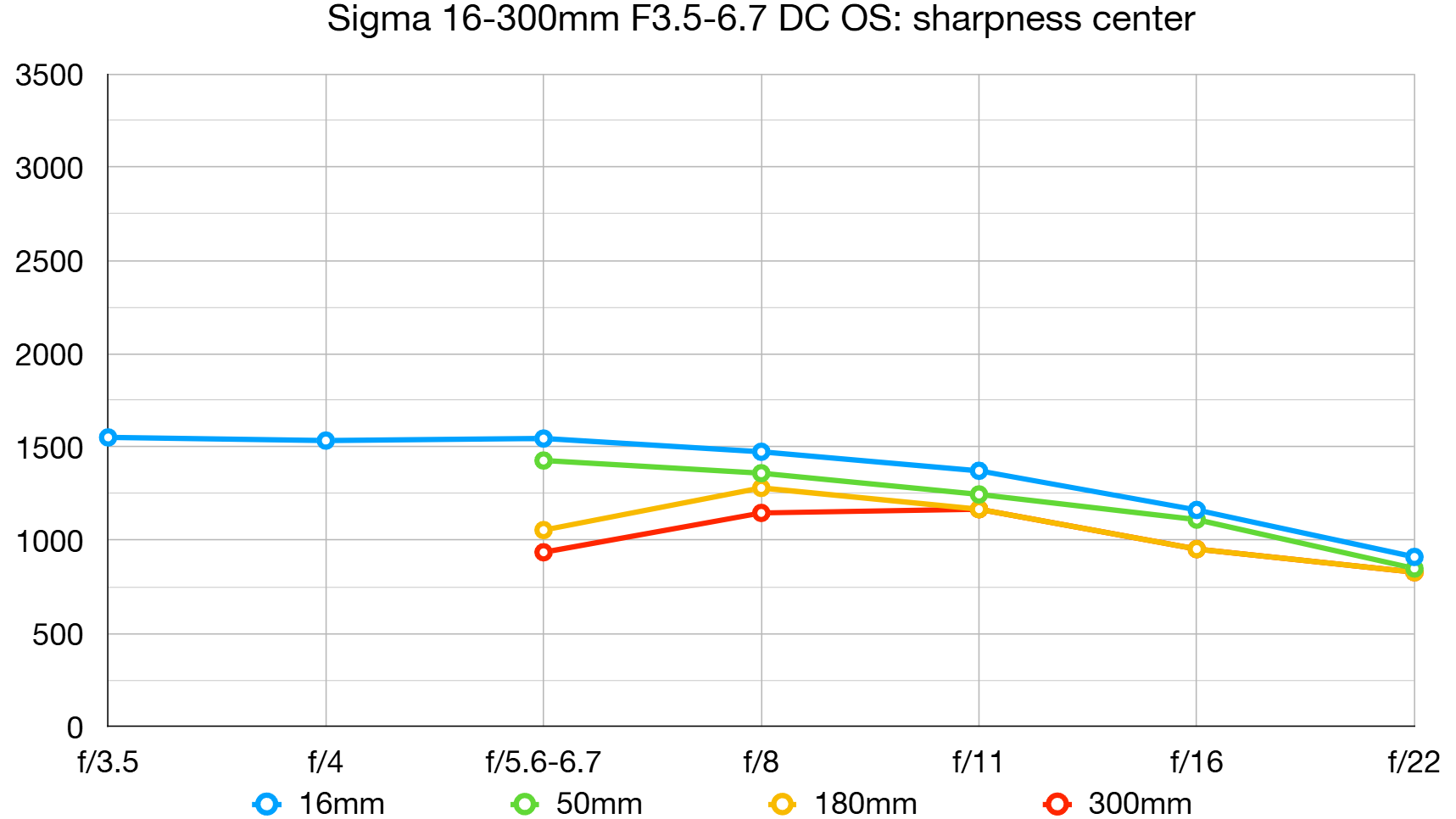
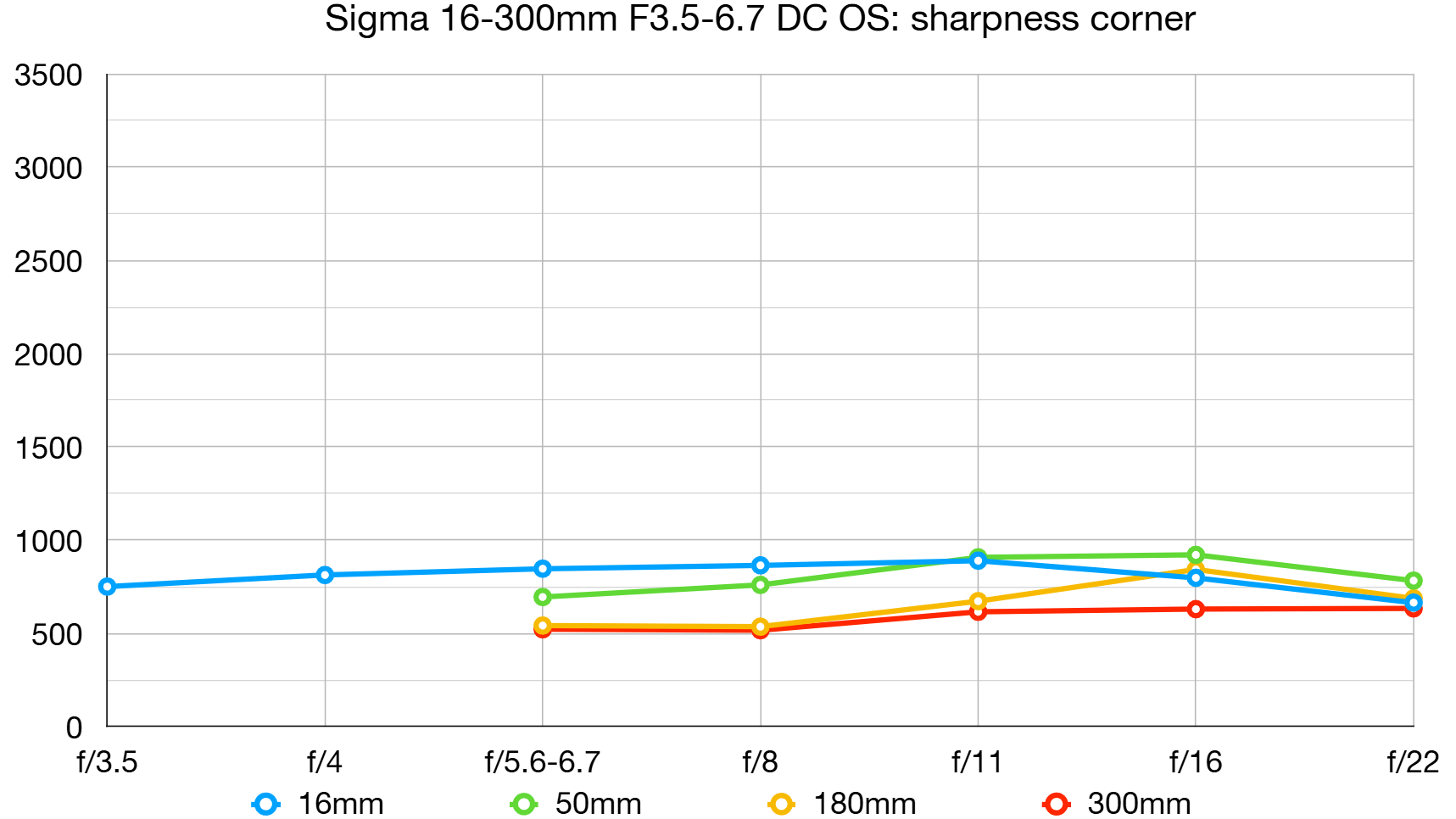
Lab results for sharpness look very unimpressive, based on close-range test charts, especially at longer focal lengths and towards the edges of the image frame throughout the zoom range. In real-world testing, however, I found that sharpness was acceptable for a superzoom lens.
Fringing:
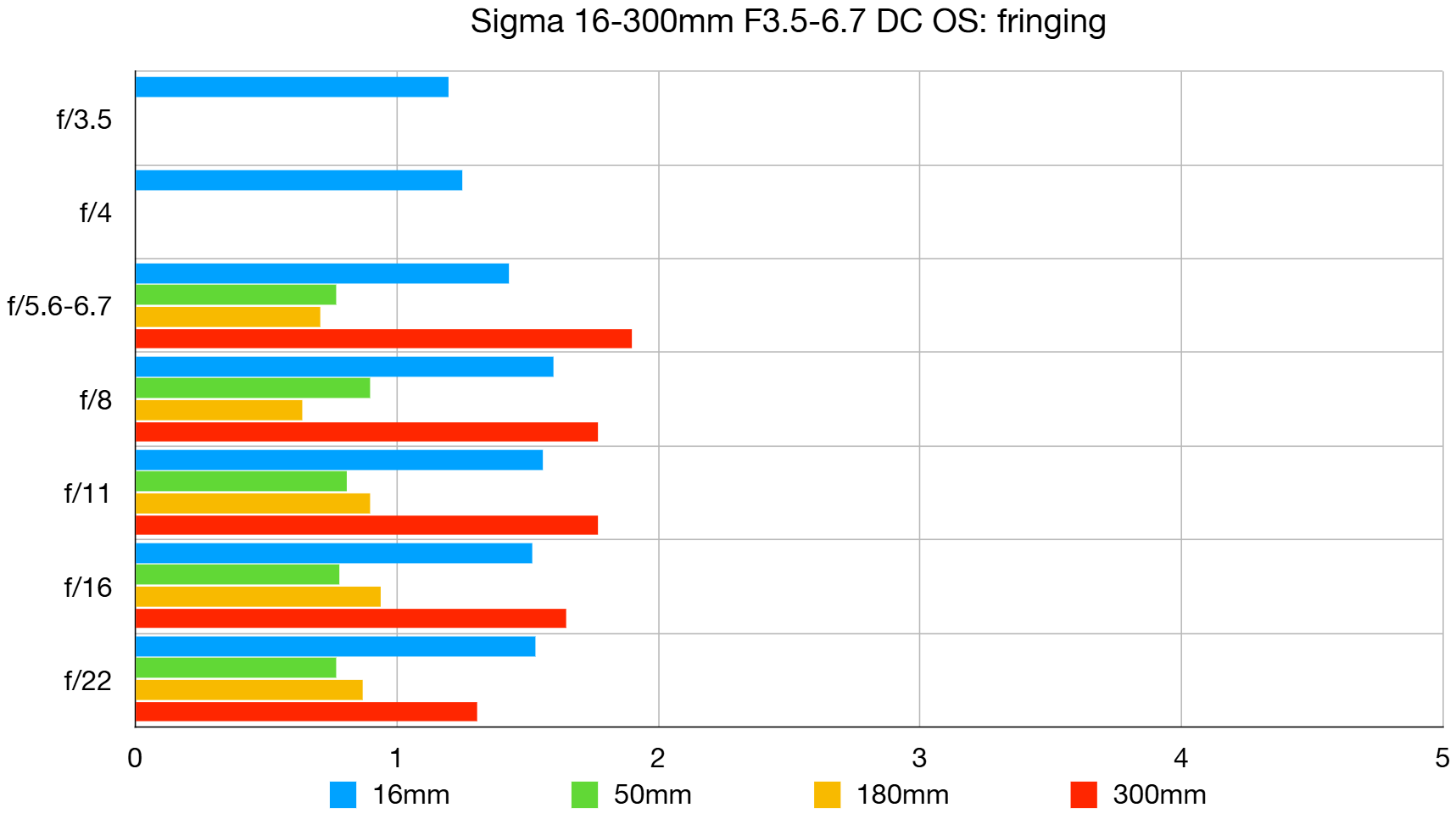
There’s fairly little color fringing throughout the entire zoom and aperture ranges, even out at the edges and corners of the image frame.
Distortion:
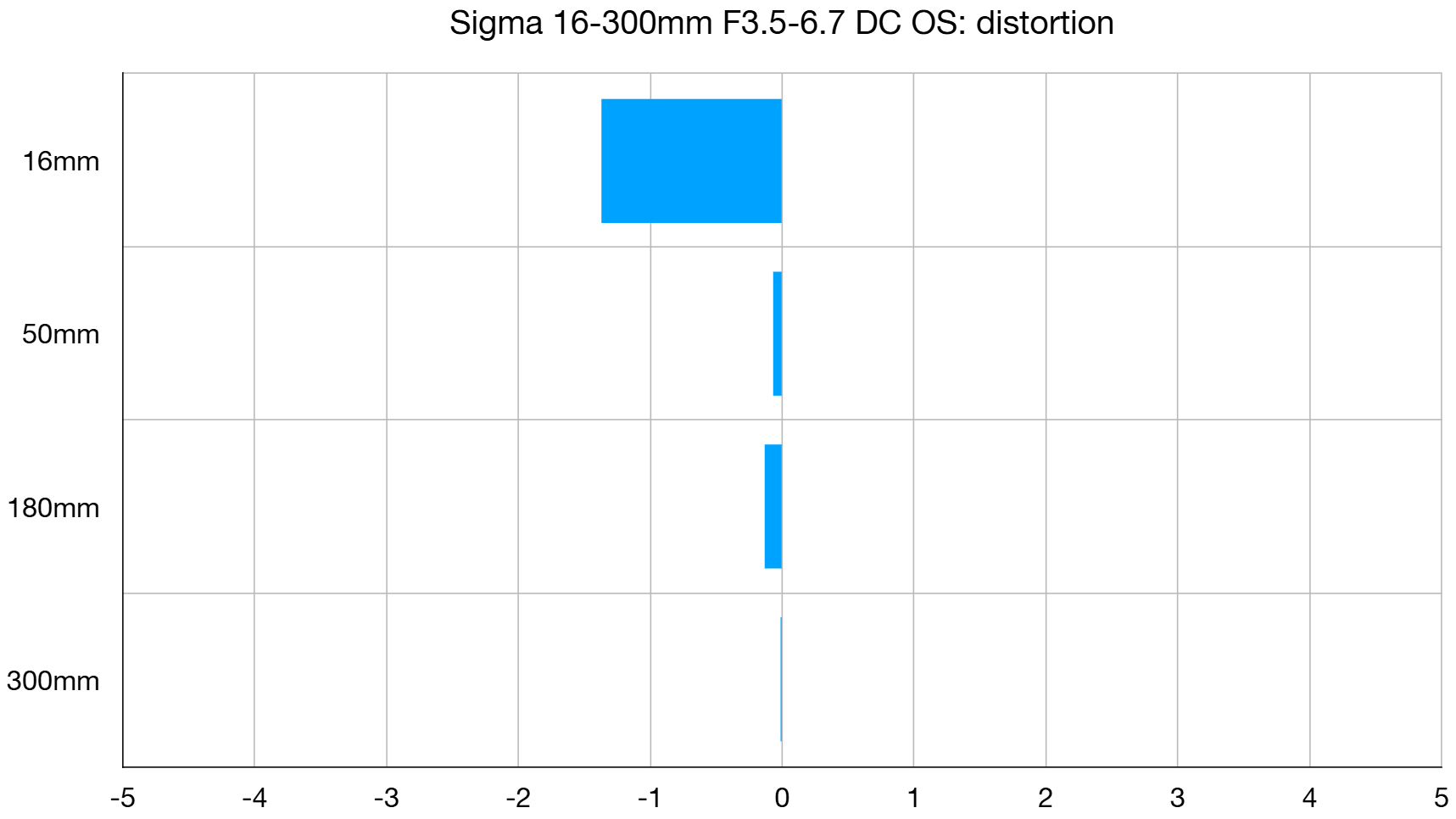
Automatic corrections keep distortions at bay but there still a little barrel distortion at the short end of the zoom range.
Sigma 16-300mm f/3.5-6.7 DC OS | C: Verdict
You might question the point of buying an ‘interchangeable lens camera’ if you’re only going to stick one lens on it and use that for everything. And you’d be right. But I really feel that while the Sigma 16-300mm doesn’t preclude the use of other lenses, it’s incredibly attractive as a travel and walkabout lens, when I want to avoid the hassle of carrying a kit back with a variety of lenses in it. Another bonus is that I can react to all sorts of shooting scenarios instantly, for example taking a wide-angle landscape shot and zooming in to photograph a distant animal or bird, without missing the shot because I was swapping between lenses at the time. The addition of up to 0.5x macro magnification is an extra bonus in terms of versatility. Another plus point for a travel and walkabout lens is that the Sigma has a splash/dust-resistant construction, so it’s pretty well guarded against inclement weather. Speaking of which, dusty conditions are an environment where I definitely don’t like swapping between different lenses on my camera body. With good optical performance, fast and accurate autofocus, and excellent optical stabilization, combined with a mammoth zoom range, I think the Sigma really is a super do-it-all lens.








